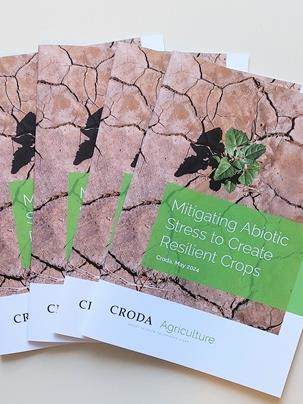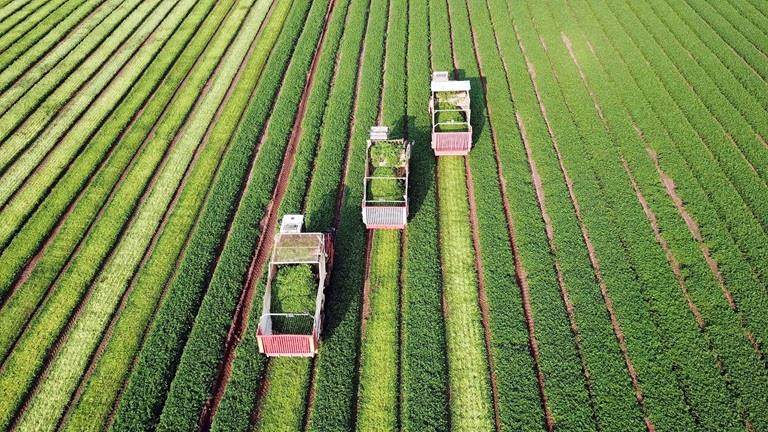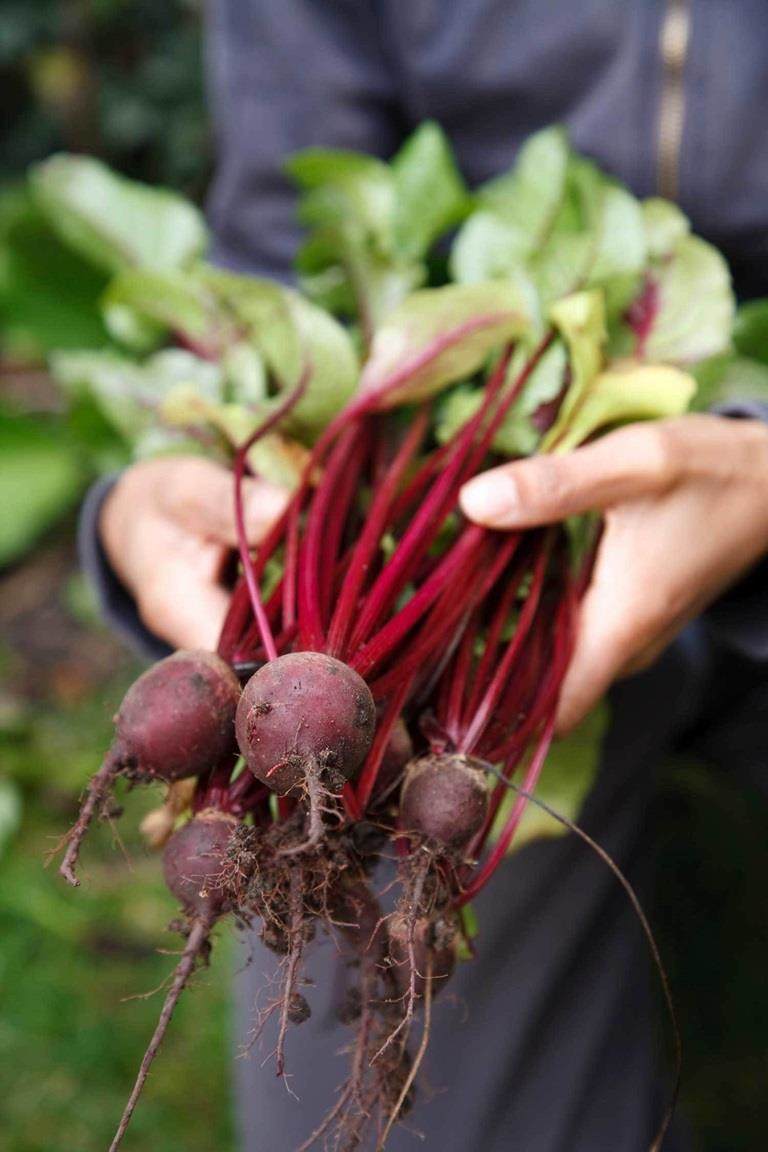The next 25 years: Smart science and sustainable innovation in Agriculture

This is not just a reflection on our past—it’s a roadmap to the future, shaped by emerging technologies, evolving consumer expectations, and the pressing global challenges of climate change, health, and food security.
Drawing on insights from Croda’s global R&D and Strategy leaders, the report highlights how innovations in AI, biotechnology, sustainability, and personalisation are driving change across Consumer Care, Pharmaceuticals, and Agriculture.
Here’s a closer look at the trends redefining agriculture and the role of specialty ingredients in building a smarter, more sustainable food system.
Navigating the future of innovative ingredients in Agriculture
Hear from our experts
Trends transforming the Agriculture speciality ingredients market
The agriculture industry is at a critical juncture. By 2050, global food production must increase by 70% to meet growing demand. Yet this growth must take place on land that is increasingly less suitable for farming and with greater efforts to restore degraded ecosystems.
As demands for sustainability, food security, and environmental stewardship grow, crop science companies and their ingredient suppliers—including Croda—must evolve. Innovation in crop protection and enhancement must be balanced with the urgent need to protect the planet.
We believe that there are four major trends that will shape the future of plant protection products in agriculture over the next 25 years.
1. From productivity to regenerative: balancing crop yield with planet care
For decades, agriculture has focused on maximising yield and productivity above all else. This drive led to the development of high-yield crops, intensive fertiliser use, and major advancements in pest management.
But this focus on short-term yield has come with long-term costs—from declining soil health and reduced biodiversity to rising greenhouse gas emissions. The future calls for a more balanced approach: restoring nature while feeding a growing global population. Crop science companies are now tasked with developing ingredients that not only increase productivity but also promote soil regeneration and reduce environmental impact.
A combination of conventional and biopesticides, for example, offers a more targeted and environmentally friendly alternative to traditional chemical pesticides alone.
This reflects a broader shift in agriculture, where innovative inputs are expected to support both productivity and environmental stewardship—ensuring future generations can continue to farm productively without further harming the planet.
2. Beyond pests: tackling environmental and biotic challenges together
Historically, agricultural innovation has focused on combating biotic stresses—pests, weeds, and diseases—primarily through synthetic pesticides and herbicides. While these have improved crop resilience, they often overlook abiotic stresses such as drought, temperature extremes, and poor soil quality.
Looking ahead, a more balanced approach will be essential—one that addresses both biotic and abiotic stresses. Genetic innovations, such as breeding crops more resilient to changing environmental conditions, will play a key role.
The rise of biostimulants—substances that enhance a plant’s resistance to abiotic stress—signals a new era for crop science suppliers. These products, which regulate plants’ biological responses to environmental challenges, help crops perform better under suboptimal conditions without heavy chemical reliance.
By addressing abiotic stresses more directly, suppliers such as Croda can help ensure stable crop yields in an increasingly unpredictable climate.
3. Nature’s new allies: the rise of microbial-based biopesticides
The past few decades have seen a gradual shift from traditional, synthetic chemical inputs towards biopesticides, particularly microbial-based products, and this trend is only set to accelerate.
Microbial-based materials, which use beneficial microorganisms to promote plant health and resilience, offer several advantages over conventional chemicals.
They are generally more environmentally friendly, with a lower carbon footprint linked to their production and use. They can also improve soil health by promoting beneficial soil microbiomes, thus supporting long-term agricultural productivity.
The shift towards microbial products also helps address the growing problem of pest resistance. Many pests have developed resistance to synthetic pesticides, reducing their effectiveness over time.
By introducing new microbial-based solutions, suppliers can offer innovative ways to combat pests while reducing the environmental impact of agriculture. This trend will likely expand as regulatory frameworks around the world place stricter limits on the use of synthetic inputs, encouraging the development of biological alternatives.
4. Farming smarter: how AI and data are creating predictive powerhouses
Data-driven agriculture has revolutionised the way farmers approach crop management.
Historically, farmers have used data reactively to identify areas of their fields affected by pests, diseases, or poor soil conditions and then apply chemical inputs to address these issues. However, the next 25 years will see a shift towards using data as a predictive tool, largely driven by advances in artificial intelligence (AI).
The integration of AI and big data will allow farmers to anticipate problems before they occur, using predictive models that analyse weather patterns, soil conditions, and crop health.
Suppliers across the crop value chain will need to adapt to this new paradigm by developing products that fit into these predictive frameworks. For example, biostimulants could be proactively ahead of a forecasted drought or pest invasion, rather than as a response to it.
This shift from reactive to proactive crop management will reduce waste, optimise the use of innovative crop science products, and help farmers achieve better results with fewer resources.
AI will also drive the adoption of precision agriculture technologies, such as drones and robotic systems, that can monitor fields in real-time and apply inputs only where needed. This precision not only reduces environmental impact but maximises efficiency—ensuring innovative products are used optimally.
For crop science suppliers, this trend represents a significant opportunity to integrate their offerings into the digital agriculture ecosystem and lead the next wave of smart agriculture.
Looking ahead
The next 25 years in agriculture will be shaped by innovations that blend productivity with sustainability. At Croda, we are committed to driving this change.
By harnessing the power of emerging science, pioneering new ingredients, and collaborating across the crop value chain, we aim to help farmers produce more, with less environmental impact—securing a healthier planet for generations to come.
By embracing these trends, we can help farmers feed a growing population while protecting our planet—a vision that has guided Croda for 100 years and will continue to inspire our work for decades to come.
Explore our Vision Report, Navigating the Future of Innovative Ingredients, to learn how we’re shaping tomorrow’s agriculture—today.
Vision report: Navigating the future of innovative ingredients
What every Agribusiness leader needs to know for the next 25 years
📘 Free report
Download our Vision report Navigating the Future of Innovative Ingredients to explore key trends redefining agriculture and the role of specialty ingredients in building a smarter, more sustainable food system.
Who should read this
-
Agribusiness professionals
-
R&D, innovation, and sustainability leaders
-
Strategic partners across the crop science value chain

Download report now
Supporting Literature
Navigating the Future of Innovative Ingredients





